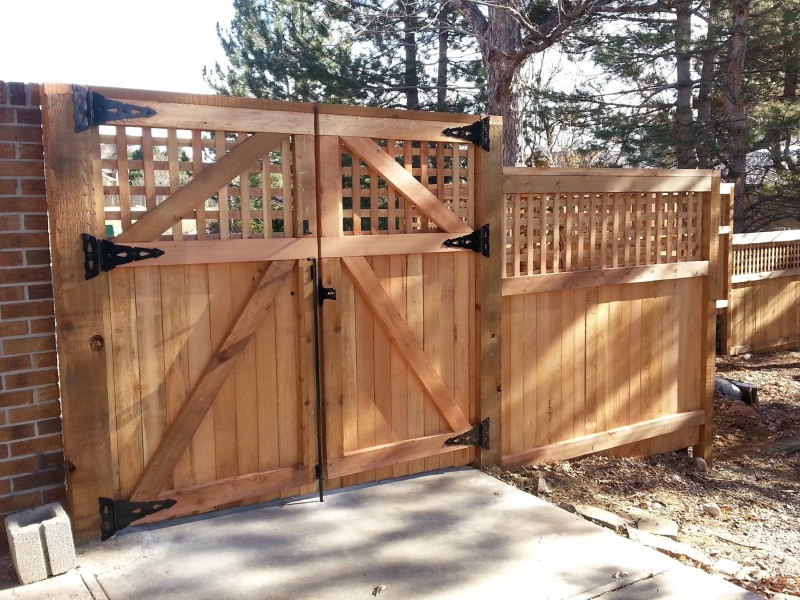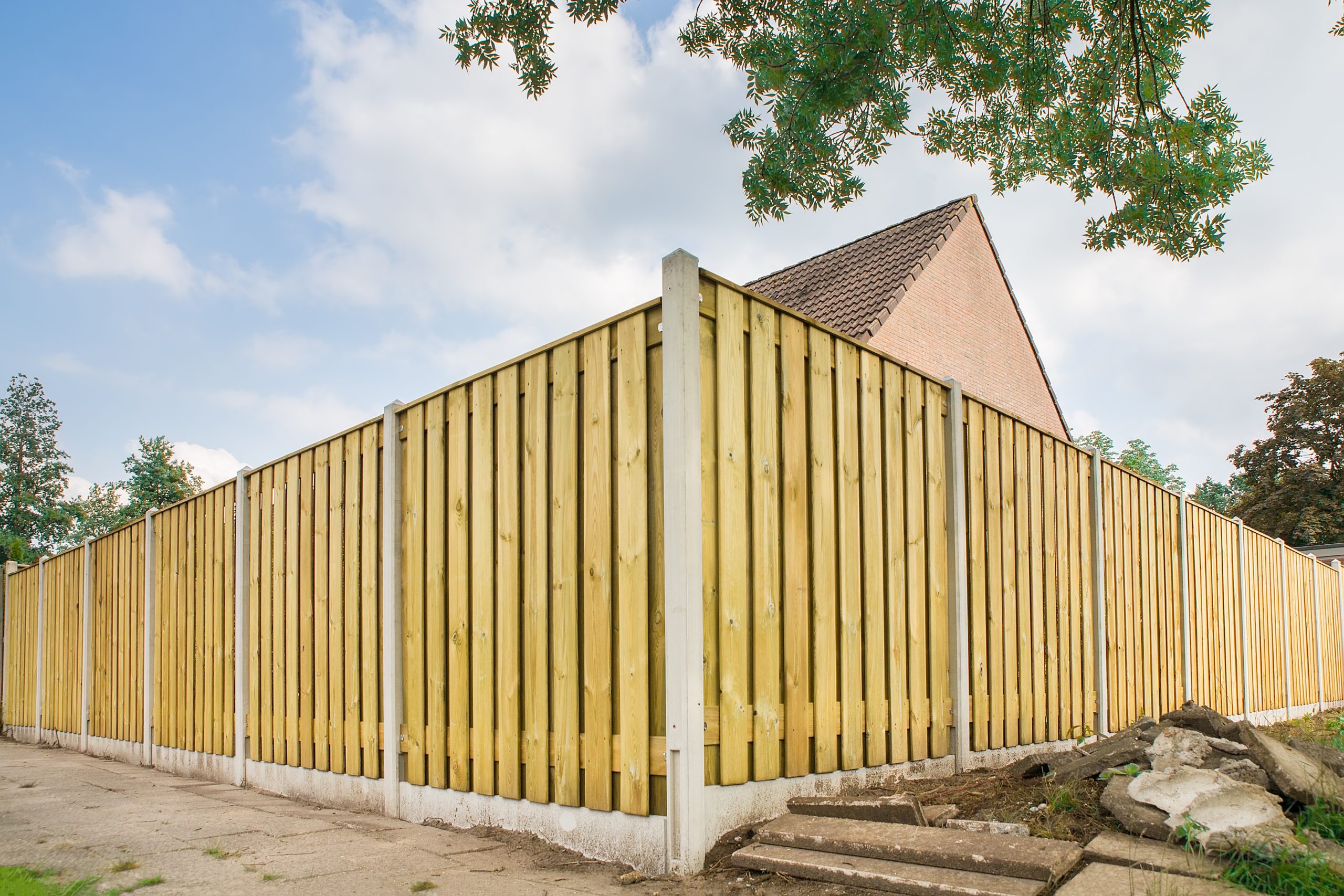All Categories
Featured
Determining when a fence requires changing can conserve you from costly repair services down the road and prevent possible safety hazards. Right here are numerous signs that might show it's time to change your fencing.
In time, fencings can incur damages from storms, dropped trees, or accidents. While small damage like tiny damages or missing nails can be fixed with a basic repair service, substantial damage such as big fractures, divides, or areas that are broken past taking care of may suggest it's time to change the whole fence. A new fencing may be the far better financial investment. if you have actually already tried multiple repair work and the damage keeps recurring.
![]()
Insects and pests like termites, woodworker ants, and rats can cause substantial damage to wood fencings. If the infestation has spread out, replacing the fencing might be the only alternative to guarantee your building is safe.
![]()
The fence blog posts are the structure of your fence, sustaining its entire framework. If the articles come to be loosened, unsteady, or start to shift in the ground, the fence's toughness and safety and security will be compromised. In some circumstances, specific blog posts can be replaced, however if multiple articles are unsteady or leaning, changing the whole fencing may be a lot more functional. A drooping or shaky fencing is not only unpleasant but also a safety and security threat.
If your fence is older and revealing substantial signs of aging-- such as discolored paint, severe wear and tear, or chronic repairs-- it may be a lot more cost-effective to change it instead than proceeding to patch it up. An older fence also may not fulfill present structure codes or safety standards, particularly in areas where regulations have altered over time.
Rot is a common issue with wood fences, particularly in damp or damp climates. Wood can absorb dampness, causing rot, mold, or mildew development, which damages the material and makes it prone to collapse. If an area of your wood fence is soft to the touch, stained, or has a moldy scent, it might be an indication that rot has actually embeded in. Sometimes, a couple of slabs or areas can be changed, but if the rot prevails, it's commonly better to change the entire fencing.
If your fencing continuously needs maintenance-- whether that's discoloration, replacing private slats, or tightening up fasteners-- it can be a sign that the fencing is nearing the end of its life. If you locate yourself frequently preserving a fence that no longer looks or functions as it should, it may be time for a full replacement.
Throughout the years, fencings can start to shed their visual appeal as a result of weathering, fading, or physical damages. A fencing that was when vivid might turn grey, end up being deformed, or start leaning. While some aesthetic problems can be remedied with a brand-new layer of paint or stain, other problems may be too serious to take care of. If your fence has come to be an eyesore that interferes with your residential or commercial property's curb appeal, replacing it can improve the look of your home and raise its value.
Maybe one of the most important factors to replace a fence is if it has become a safety and security issue. Whether due to rotting messages, leaning, or damaged parts, a fencing that no longer does its designated function-- such as maintaining pet dogs or children secure-- can be a liability.
Conclusion
Your fence plays a crucial duty in shielding your building, boosting personal privacy, and improving your home's aesthetic allure. Identifying when it's time to change your fence can prevent security hazards, decrease ongoing fixings, and conserve you money in the future. If your fence reveals signs of comprehensive damage, decaying, pest invasion, or age-related wear, it's time to consider a replacement. By resolving these concerns early, you can guarantee that your property stays safe, practical, and aesthetically appealing for years to come.
- Damages Past Fixing
In time, fencings can incur damages from storms, dropped trees, or accidents. While small damage like tiny damages or missing nails can be fixed with a basic repair service, substantial damage such as big fractures, divides, or areas that are broken past taking care of may suggest it's time to change the whole fence. A new fencing may be the far better financial investment. if you have actually already tried multiple repair work and the damage keeps recurring.
- Parasite Invasion

Insects and pests like termites, woodworker ants, and rats can cause substantial damage to wood fencings. If the infestation has spread out, replacing the fencing might be the only alternative to guarantee your building is safe.
- Unsteady Fence Articles

The fence blog posts are the structure of your fence, sustaining its entire framework. If the articles come to be loosened, unsteady, or start to shift in the ground, the fence's toughness and safety and security will be compromised. In some circumstances, specific blog posts can be replaced, however if multiple articles are unsteady or leaning, changing the whole fencing may be a lot more functional. A drooping or shaky fencing is not only unpleasant but also a safety and security threat.
- Age of the Fencing
If your fence is older and revealing substantial signs of aging-- such as discolored paint, severe wear and tear, or chronic repairs-- it may be a lot more cost-effective to change it instead than proceeding to patch it up. An older fence also may not fulfill present structure codes or safety standards, particularly in areas where regulations have altered over time.
- Considerable Rot or Mold And Mildew Development
Rot is a common issue with wood fences, particularly in damp or damp climates. Wood can absorb dampness, causing rot, mold, or mildew development, which damages the material and makes it prone to collapse. If an area of your wood fence is soft to the touch, stained, or has a moldy scent, it might be an indication that rot has actually embeded in. Sometimes, a couple of slabs or areas can be changed, but if the rot prevails, it's commonly better to change the entire fencing.
- Regular Maintenance Requirements
If your fencing continuously needs maintenance-- whether that's discoloration, replacing private slats, or tightening up fasteners-- it can be a sign that the fencing is nearing the end of its life. If you locate yourself frequently preserving a fence that no longer looks or functions as it should, it may be time for a full replacement.
- Aesthetic Decrease
Throughout the years, fencings can start to shed their visual appeal as a result of weathering, fading, or physical damages. A fencing that was when vivid might turn grey, end up being deformed, or start leaning. While some aesthetic problems can be remedied with a brand-new layer of paint or stain, other problems may be too serious to take care of. If your fence has come to be an eyesore that interferes with your residential or commercial property's curb appeal, replacing it can improve the look of your home and raise its value.
- Safety And Security Problems
Maybe one of the most important factors to replace a fence is if it has become a safety and security issue. Whether due to rotting messages, leaning, or damaged parts, a fencing that no longer does its designated function-- such as maintaining pet dogs or children secure-- can be a liability.
Conclusion
Your fence plays a crucial duty in shielding your building, boosting personal privacy, and improving your home's aesthetic allure. Identifying when it's time to change your fence can prevent security hazards, decrease ongoing fixings, and conserve you money in the future. If your fence reveals signs of comprehensive damage, decaying, pest invasion, or age-related wear, it's time to consider a replacement. By resolving these concerns early, you can guarantee that your property stays safe, practical, and aesthetically appealing for years to come.
Latest Posts
Explore WyHy Federal Credit Union – Top Benefits for Your Financial Success
Published May 22, 25
1 min read
Explore Your Financial Partner at WyHy – Key Advantages for Your Financial Success
Published May 21, 25
1 min read
The Power of Strategic Media Preparation with Complete Circle Advertising
Published May 20, 25
1 min read
More
Latest Posts
Explore WyHy Federal Credit Union – Top Benefits for Your Financial Success
Published May 22, 25
1 min read
Explore Your Financial Partner at WyHy – Key Advantages for Your Financial Success
Published May 21, 25
1 min read
The Power of Strategic Media Preparation with Complete Circle Advertising
Published May 20, 25
1 min read